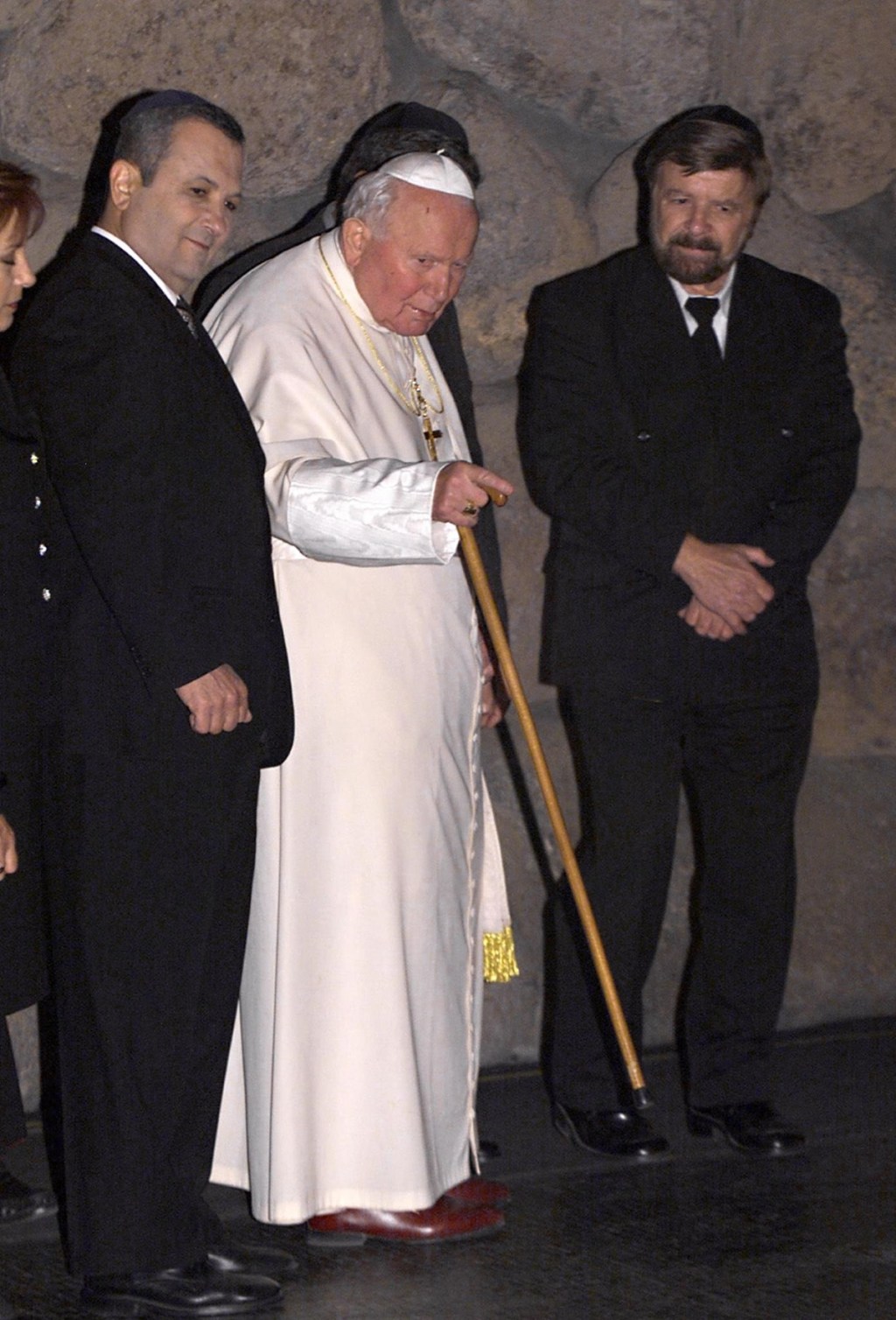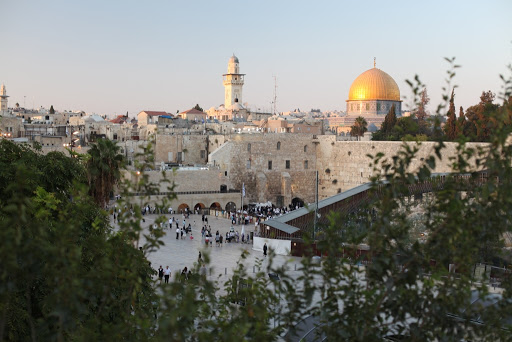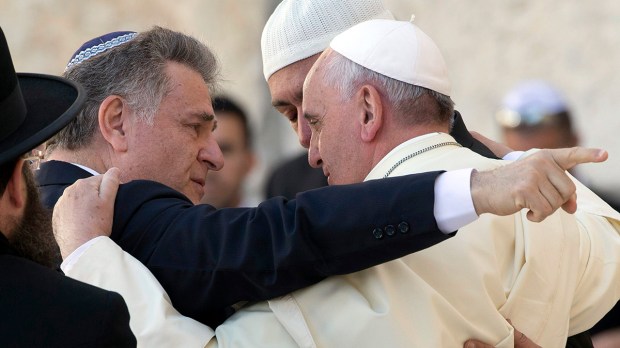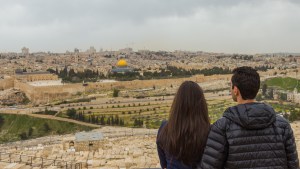As Israel and Hamas face off and the Vatican condemns violence against civilians on both sides, let’s take a look at the history of the relationship between the Vatican and the state of Israel.
1904 – The father of Zionism meets Pope Pius X
A few years after the first Zionist Congress was held in Basel, Theodor Herzl was seeking support around the world for his plan for a Jewish home in Palestine. In January 1904, he was finally received at the Vatican. However, Pope Pius X firmly rejected his proposal.
In his diary, Theodor Herzl wrote of the Pontiff’s speech to him: “We cannot prevent the Jews from going to Jerusalem, but under no circumstances can we support this.” He reportedly added, “The Jews have not recognized Our Lord, therefore we cannot recognize the Jewish people.” The Pope’s “non possumus” will long remain the line taken by the Holy See, which is primarily concerned with maintaining peace in the region, protecting Christians and the Holy Places.
1948 – Pius XII’s concern about the war
After the proclamation of the State of Israel in May 1948, the region caught fire. In October of the same year, Pope Pius XII published an encyclical lamenting “the war which is upsetting Palestine.” Without mentioning Israel by name, he confessed his sadness at seeing “the blood of men continue to flow” on the land where Christ walked. The Pope was also concerned about the preservation of the Holy Places.
He took up the idea of giving Jerusalem an “international character” that would guarantee the protection of the shrines. He called for guaranteed access to the Holy Places scattered throughout Palestine, “as well as freedom of worship and respect for religious customs and traditions.”
1964 – Paul VI’s trip to the Holy Land
Pope Paul VI’s visit to the Holy Land in 1964 was a historic event. Never since St. Peter had a pope returned to the roads of Palestine. Aware of the political implications of this trip, Paul VI preferred to give it an exclusively religious character. Not once did he mention the name of the Hebrew state. At the time, no Arab country recognized its existence, nor did the Holy See. Paul VI did, however, meet the head of the Israeli government in Megiddo. Paul VI was followed by his successors: John Paul II in 2000, Benedict XVI in 2009 and Francis in 2014.

1965 – The Nostra Aetate declaration of the Second Vatican Council
Published in October 1965, the declaration Nostra Aetate opened a new page in the Catholic Church’s relations with the Jewish world. “Indeed, the Church believes that by His cross Christ, Our Peace, reconciled Jews and Gentiles, making both one in Himself,” say the Council Fathers.
This declaration — which was bitterly debated by Eastern patriarchs and bishops who found the text too political — states that Christ’s death cannot be imputed indiscriminately to the Jews of that time “nor to the Jews of our time.” A Secretariat for Christian Unity, responsible for ecumenical dialogue and relations with Judaism, was created in the wake of the Council. Pope John Paul II would later refer to Jews as “older brothers.”
1993 – Fundamental Agreement establishes diplomatic relations
It was not until December 30, 1993, that relations between the Holy See and Israel were officially normalized, with the signing of the Fundamental Agreement. This made it possible to establish diplomatic relations the following year.
Previously, there had been neither an Israeli embassy to the Holy See in Rome nor a nunciature in Israel, but only an apostolic delegation. There were, however, contacts between popes and Israeli government officials. Similarly, John Paul II had previously used the expression “State of Israel,” recognizing a de facto situation.
This diplomatic agreement was facilitated by the signing of the Oslo Accords three months earlier between Ytzhak Rabin, Israeli Prime Minister, and Yasser Arafat, Chairman of the PLO Executive Committee. These agreements laid the foundations for resolving the Israeli-Palestinian conflict. In 1994, official relations were also established between the Holy See and Yasser Arafat’s Palestine Liberation Organization.

The Basic Agreement launched a series of discussions between Rome and Israel on more technical subjects. In 1997, the two states reached a further agreement recognizing the legal personality of the Catholic Church. However, despite intensive talks, no comprehensive legal-financial agreement has yet been reached on issues relating to property rights and tax exemptions for the Church in Israel.
Prior to the creation of the State of Israel in 1948, Christian institutions in the Holy Land were exempt from taxation under the 1901 Mytilene Agreement with the Ottoman Empire, which controlled the region. This issue regularly raises major tensions between Israel and the Christian communities of the Holy Land.
2023 – The Holy See (still) supports the two-state solution
Vatican diplomacy remains committed to a two-state solution for Israel and Palestine. Last September, before the Hamas attack on Israel, Archbishop Paul Richard Gallagher, the linchpin of Vatican diplomacy, once again pleaded at the UN for a peace plan that would not be “to the detriment of local populations or the legitimate demands of Israelis and Palestinians.”
On the subject of the Palestinians, the British-born prelate called for “honest recognition” of the fact that they are in a “very weak position,” both because of internal governance problems and “the increasingly authoritarian and militarily invasive attitude of the State of Israel.”
Reacting to Hamas’s “inhuman” attack on Israel, Cardinal Secretary of State Pietro Parolin agreed with the Pope on “the right of those who are attacked to defend themselves,” but while sparing the civilians of Gaza. Interviewed by Vatican News on Friday, the Holy See’s “number 2” reiterated the vision of a two-state solution “which would allow Palestinians and Israelis to live side by side in peace and security.”



